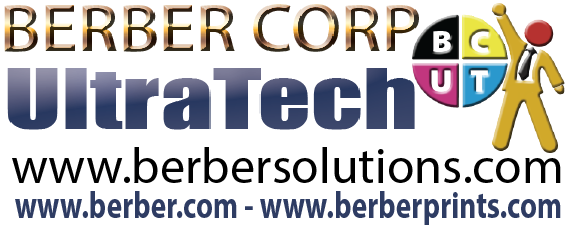Acceptable Vector Art
GUIDELINES FOR PRODUCTION / CAMERA READY ART
All fonts should be converted to curves (paths or outlines)
If Raster elements are part of the artwork: They should be embedded
They should be provided at actual imprint size
They should be from 300 DPI or higher source documents at the original size
PDF (Preferred format)
EPS Adobe Illustrator – A1 Version CS2 or higher
CorelDraw – CDR Version 10 or higher
Note: These formats are also acceptable for art that contains both raster/bitmap art and vector art in the same graphics file.
All files must be created in approved professional graphics software. Files saved without vector data or from unapproved software are not considered Production Ready Artwork.
ACCEPTABLE FORMAT FOR RASTER ART (Bitmaps)
PDF at final imprint size
TIFF at final imprint size
EPS at final imprint size
The following formats are acceptable for uploads: TIF, .TIFF, .EPS, .AI, .PSD, .BMP, .GIF, .JPG, .PNG, .PDF. Recommended: To reduce file size, please upload in .jpg format. For all other file formats, ensure all layers are flattened.
- .TIF (Tagged Image File) – High-quality graphics format that is often used for storing multi-colored images. Supports layers, multiple pages, raster images, vector images, lossy compression, and lossless compression.
- .TIFF (Tagged Image File Format) – High-quality graphics format that is often used for storing multi-colored images. Supports layers, multiple pages, raster images, vector images, lossy compression, and lossless compression.
- .EPS (Encapsulated PostScript) – PostScript file used primarily in the transfer of images to different operating systems.
- .AI (Adobe Illustrator file) – Vector graphics file that uses paths connected by points.
- .PSD (Photoshop Document) – Image file created by Adobe Photoshop; supports various types of Photoshop image options, including image layers, adjustment layers, etc. We recommend that .PSD files be flattened prior to being uploaded.
- .BMP (Bitmap) – High-quality graphics format which allows it to produce large file sizes and uses image compression algorithms that can decrease file size.
- .GIF (Graphics Interchange Format) – Uses lossless compression that may not degrade the quality of the image. GIFs store image data using indexed color, with a maximum of 256 colors.
- .JPG (Image Compression File) – Compressed image format that uses lossy compression; commonly used for storing realistic photos (digital photos), since it is able to compress substantially with minimal loss in image quality.
- .PNG (Portable Network Graphics) – A bitmapped image format with lossless data compression. Gradients come out smoother and do not have the distortions that may appear in a .JPG. Used mainly for archiving files. Does not support CMYK.
- .PDF (Portable Document Format) – The most preferred file format to be set in pre-press quality. Ideal for viewing on multiple computers, because it preserves the formatting, fonts, and other elements within the document on different computers, as well as when it is printed.
- Help Preparing Files click here
ACCEPTABLE FORMATS FOR VECTOR ART for STATIONERY
We accept the following file Format: .TIF, .TIFF, .EPS, .AI, .PSD, .JPG, .PNG & .PDF.
Prices include processing one set of uploaded files and creating a single digital proof. For more on stationery preparations click here
RESOLUTION:
All file formats must have a minimum of 350 dpi (dot per inch) resolution.
In printing terminology, the bleed is the extra margin on a print product that is meant to be trimmed off when the product is trimmed to its final size. Bleed basically means that the color and graphics on a product “bleed off the page” to ensure continuity of the color to the edge of your product. For the best results, please download the product templates from our download templates page. Learn more click here|>>>
Download FREE Layout Assistance Templates
The images designed for the web done at a low screen resolution of 72 dpi. Print images need to be created at 350 dpi or there will be a substantial drop in the image quality. click here to a comparison
COLOR MODE:
All color artwork and/or images must be provided in CMYK (cyan, magenta, yellow, black) color mode.
All black & white artworks and/or images must be provided in grayscale color mode.
BLEED:
Please build your press-ready digital files by adding 0.1″ dimension for business cards, postcards, rackcards, and add 0.125″ for all other products. For more information on preparing your stationery printing please click here.……………………. learn more>>>
Resolution is also known as dpi (dots per inch) or ppi (pixels per inch). It indicates the number of colored dots or pixels that make up one image. The higher the dots per inch/pixels per inch, the greater the resolution and the clearer the resulting final print will be. LPI, or lines per inch, is a measurement of resolution that uses a halftone screen. LPI measures how close together the lines are in this halftone grid. The higher the lines per inch (or the closer the lines are together), the better and clearer the image will be. In order to determine the appropriate image resolution needed for print, the combination of your printer’s DPI and the required LPI must be observed. Whereas the DPI determines the number of dots per inch, the LPI is also needed in order to determine the frequency of the lines containing the dots, per inch of the halftone grid. Once these two elements are calculated, the correct resolution can be determined. The image usually must have 1.5 to 2 times as many dots per inch as lines per inch. We print with 200 lpi for high-quality, beautiful, final prints |

